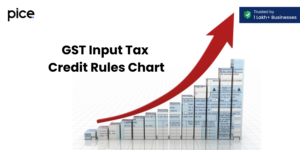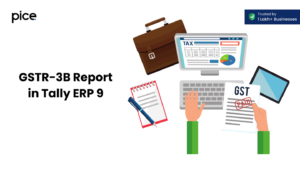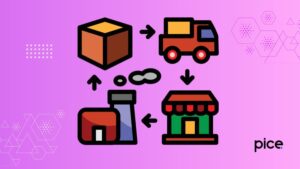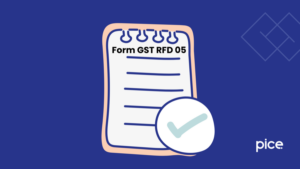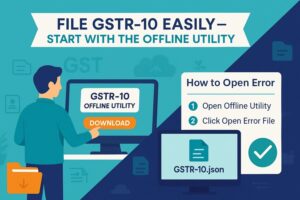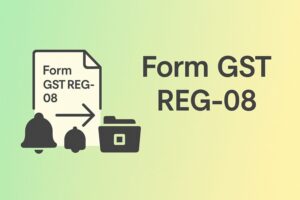Reverse Charge Mechanism: Supply to Unregistered Person Under GST
- 21 Feb 25
- 9 mins
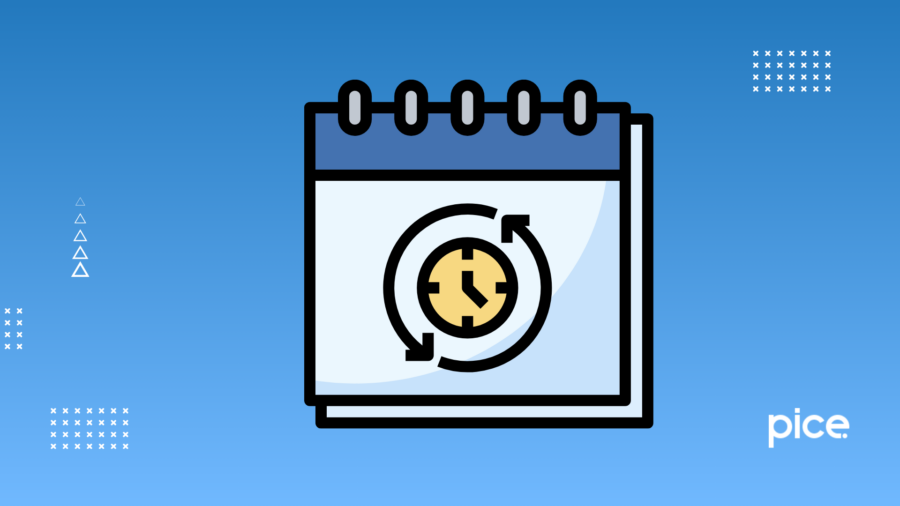
Reverse Charge Mechanism: Supply to Unregistered Person Under GST
Key Takeaways
- RCM shifts GST liability from suppliers to recipients.
- Registered buyers must pay GST on purchases from unregistered suppliers.
- Time of supply under RCM depends on payment, invoice, or receipt date.
- Recipients can claim ITC on GST paid under RCM for business use.
- Self-invoicing is required for RCM transactions with unregistered suppliers.
The Reverse Charge Mechanism (RCM) under the Goods and Services Tax (GST) is a unique provision that transfers the tax liability from the supplier of goods or services to their recipient. Instead of the supplier collecting and depositing the tax as in the usual way of taxation, RCM ensures business compliance and direct tax compliance indirectly through a mechanism of unregistered suppliers, importations, goods, or supply between interstate goods, thus addressing revenue leakage and improving tax administration.
In this blog, we will walk you through a guide on how RCM is applicable to supply to unregistered person under GST.
What Is Reverse Charge Mechanism?
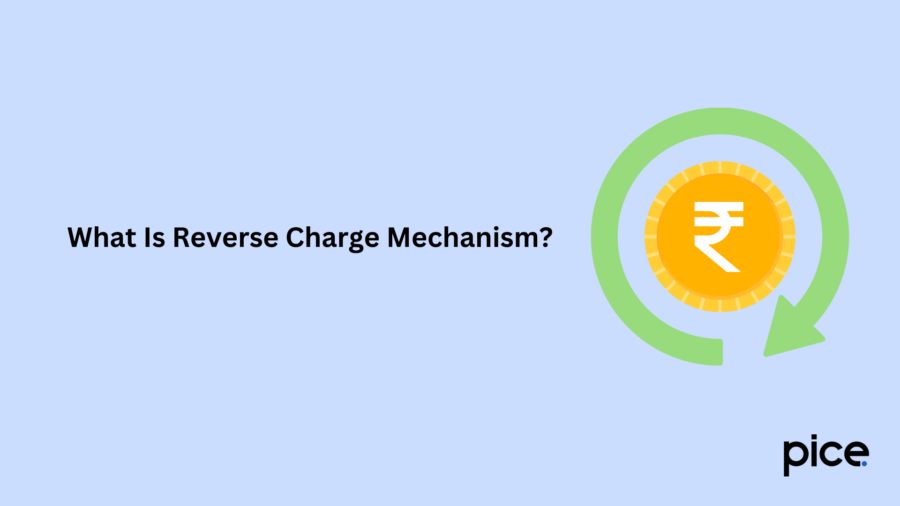
Reverse Charge Mechanism (RCM) under GST is a situation where the liability of paying taxes for the supply of goods and services shifts from suppliers to recipients, particularly in cases that involve purchases from any unregistered persons.
The main aim of this mechanism is to broaden the collection of taxes, especially in unorganized sectors and even consider the imports of services. There are only certain types of business entities following the reverse charge mechanism.
When Is Reverse Charge Applicable?
Reverse Charge applies well for both goods and services. Under GST, the three different kinds of reverse charge scenarios are as follows:
A. Supply Nature
The reverse charge mechanism applies well to the nature of goods and services applicable as per the notification under CBIC covered under RCM. This scenario is specifically covered under Section 9(3) of the CGST/SGST (UTGST) Act along with Section 5(3) of the IGST Act.
B. Supply from Unregistered Individuals to Registered Individual
Following Section 9(4) of the CGST/SGST Act and Section 5(4) of the IGST Act, if any registered person buys goods and services from any unregistered dealer, the registered taxpayer is then liable to pay GST on a reverse charge basis. The provisions of the Act apply to the recipient as if the person is liable to pay taxes for the supply of goods and services.
This is applicable only under certain conditions:
i. Supply should be by an unregistered person
ii. Supply must be related to payment of tax on supply of goods and services
iii. Supply must be to any registered supplier
iv. Supply should be intra-state supply as there is the necessity of compulsory registration for inter-state sales
C. Supply of Services Through an e-commerce
An e-commerce transactions platform providing a convenient platform to both buyers and sellers for paying GST on behalf of suppliers. However, if there is an absence of physical presence of an e-commerce operator in the taxable territory, then an individual who has taken the responsibility of representing such an operator will take the liability of paying taxes. If a representative is absent, the e-commerce operator appoints a representative who will be responsible for paying GST.
D. Time of Supply Under RCM
The time of supply is categorized into two groups under RCM– Time of supply for goods and time of supply for services. Let’s go through these two categories in detail below:
E. Time of Supply for Goods
For the Reverse Charge Mechanism, the time of supply for goods shall take place earliest on any of the following dates under the Indian finance ecosystem:
- The date of payment
- The date of receipt of goods
- The date that falls immediately after 30 days from the issuance date of the normal invoice from the supplier’s end
If it becomes impossible to determine the time of supply, the time of supply will be considered the date of entry in the accounts book of the recipient. Let us further understand this with an example:
Suppose, given are the following entries:
a) Date of receipt of goods is 15th May, 2021
b) Date of tax invoice is 1st July, 2021
c) Date of entry in receiver’s book is 18th May, 2021
Following this information provided, the time for the supply of service will be 15th May, 2021.
F. Time of Supply for Services
In the case of reverse charge, the time of supply calculation for services will be the earliest of the following dates in the connected finance ecosystem:
- The date of payment
- The date of issuance of invoice by the recipient
- The date that falls immediately after 60 days from the date of issuance of GST-compliant invoice by the unregistered supplier
If a difficulty arises in determining the time of supply, the time of supply will be the date of entry in the accounts book of the recipient. Go through the following example to gain a detailed understanding of the time of supply for services. For example:
a) Payment date is 15th July, 2021
b) Date of issuance of invoice by the recipient is 24th July, 2024
c) Date for making an entry in the accounts book of the receiver is 18th July, 2021
Following the conditions, the time of supply for service in this case will be 14th July, 2021.
Registration Rules Under RCM
According to Section 24 of the CGST Act, 2017, a person who is eligible to pay GST under the reverse charge mechanism must be a registered individual under GST. The threshold applicable limit of ₹20 lakh or ₹40 lakh, as per the case, is not applied.
On the other hand, in RCM transactions, suppliers must note on invoice in respect if tax is payable under RCM but cannot claim ITC on the GST to be paid. However, the recipients can claim ITC on the GST paid for carrying out business-related goods and services.
When it comes to composition dealers, they are eligible for tax payable at standardized rates under RCM in comparison with their usual applicable rates. On the other hand, the GST compensation cess also applies well to RCM transactions. This thereby indicates that for some applicable items, the cess should be calculated and paid with regular GST under RCM.
Input Tax Credit (ITC) Under RCM
When GST payment is done under RCM, the supplier cannot claim for Input Tax Credit (ITC). The recipients however have the ultimate right to claim and optimise ITC under two conditions:
- Recipients must have received the goods and services
- The goods and services can be used only for meeting business requirements
Circular No. 211/5/2024-GST provides clarity on the timeframe for claiming Input Tax Credit (ITC) on GST paid under the Reverse Charge Mechanism (RCM). According to the circular, the ITC can only be claimed within the financial year, provided the invoice details were available.
What Is Self-Invoicing?
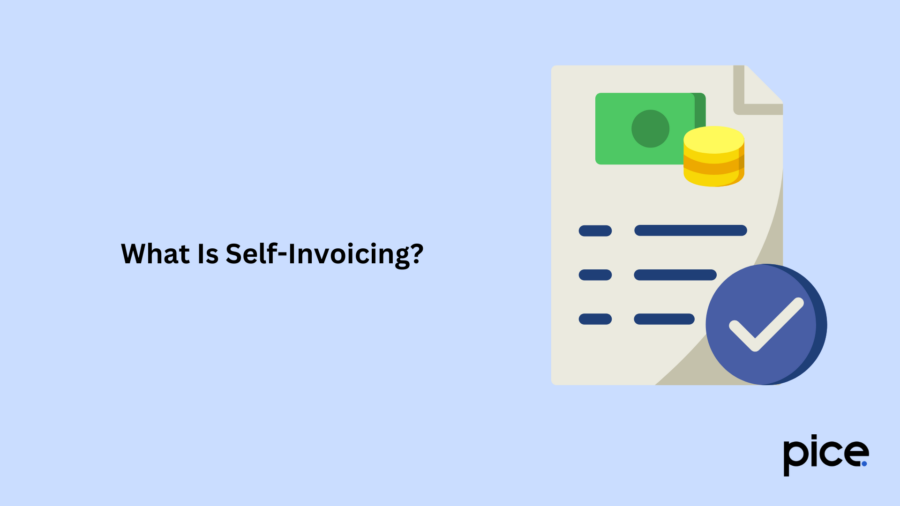
Self-invoicing happens when buyers themselves create the invoice instead of merchants delivering it to buyers. This invoicing solution is necessitated because of the shifting of the tax liability upon the person liable under RCM provisions.
The registered person becomes liable for GST payment when a registered business acquires goods or services from an unregistered supplier. The formation of bulk invoicing allows the registered business to discharge its tax liability.
Self-invoicing is to be done on the receipt of goods and services from unregistered suppliers for furtherance of business. However, it can issue a consolidated invoice at the end of the month for small purchases, provided the total aggregate supply value exceeds ₹5,000 during one specific day.
Note that not all purchases would require self-invoicing when purchased from unregistered suppliers; however, they may require self-invoicing if they fall under RCM provisions.
How Is Self-Invoicing Helpful?
Self-invoicing is favourable for both a customer and supplier. Some of the benefits of self-invoicing can be summarized below:
- Enhanced Efficiency: A self-billed invoice lessens the supplier's obligations since a customer prepares an invoice that lessens the compliance burden and increases efficiency.
- Timely Payments: With self-billed invoices, usually, payments are made with the sending of an invoice by a customer. Thus, the supplier gets quicker payments.
- Greater Accountability: One of the biggest advantages of self-invoicing is that the customer can manage invoices by himself. He could even alert the supplier about the invoice to keep the transactional process moving.
Conclusion
To conclude, the RCM under goods and services tax is important for establishing a neat and accountable system of taxation. It shifts responsibility to a specified class of recipients that would minimize evasion, enhance compliance and allow seamless feeding of transactions into the GST platform.
This applies especially in the cases of supply to unregistered person under GST.
💡If you want to streamline your payment and make GST payments via credit card, consider using the PICE App. Explore the PICE App today and take your business to new heights.
 By
By 






